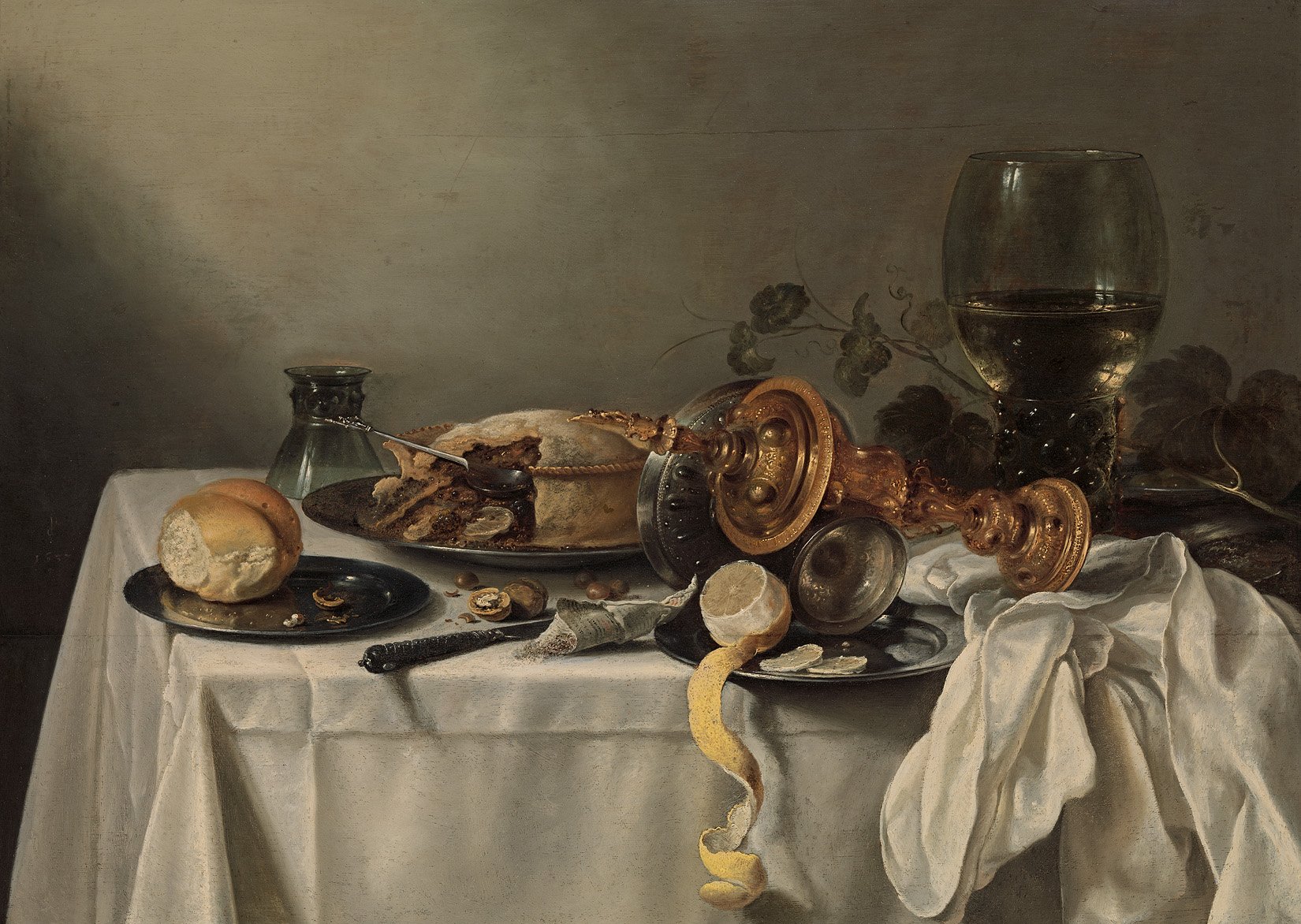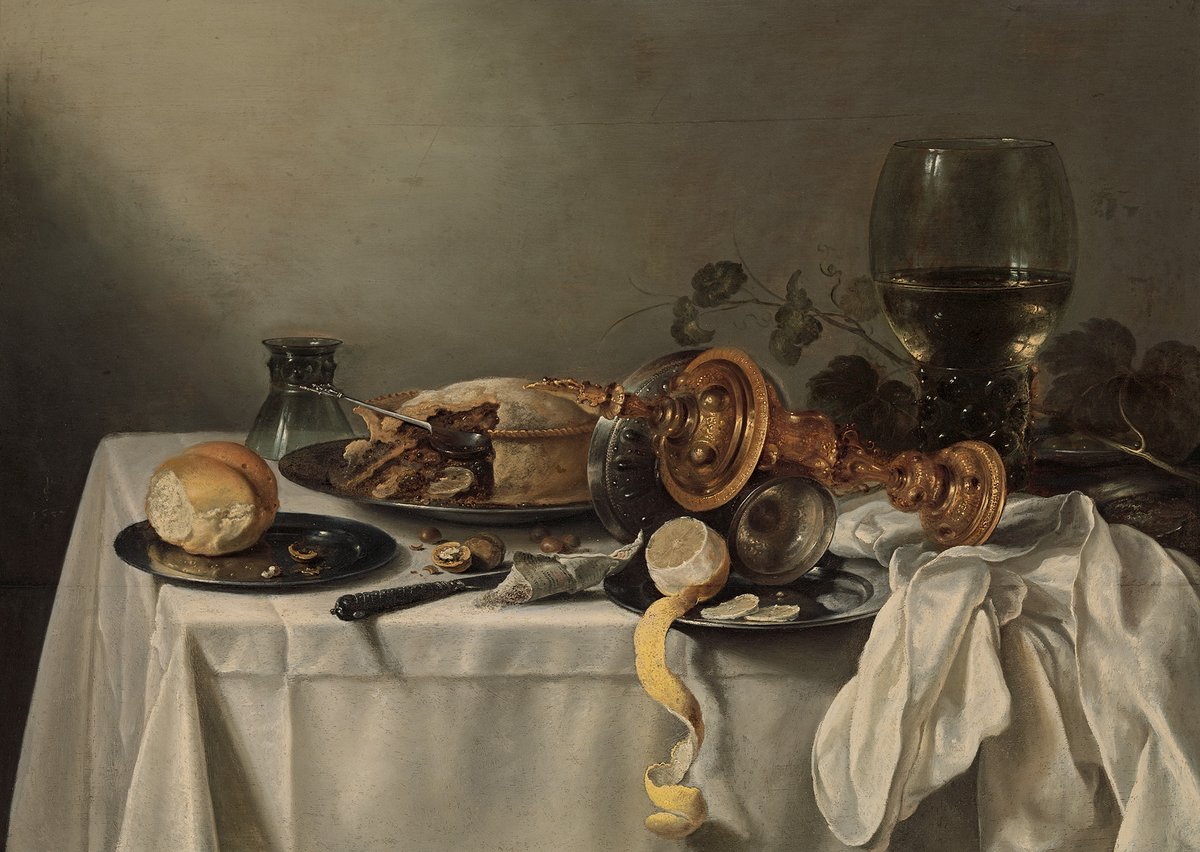Pieter Claesz.
Still Life with Roemer, 1637

Pieter Claesz
Still Life with Roemer, 1637
Kunst Museum Winterthur, Schenkung der Stiftung Jakob Briner, 2018
Foto: SIK-ISEA, Zürich (Philipp Hitz)
Still Life with Roemer, painted by Pieter Claesz. in 1637, is one of the highlights of our remarkable collection of Dutch Golden Age paintings. The master of the monochrome banquet pieces was one of the most influential Dutch still-life painters. By selecting his colors carefully, Claesz. captured surfaces and the materiality of textile, dishware and food in such a nuanced and realistic way, that one feels invited to touch the objects.
Trompe l’œil or «deceives the eye» was a very significant concept in the Dutch Baroque. The still-life painters competed among themselves by the illusionistic depiction of their motives: just like the crispy breadcrumbs and the shiny pulp of the lemon showing their freshness, the knife hanging over the edge of the table and the silver spoon in the cut-out pie practically invite us to diner. The mirroring and light reflections also contribute to the virtuosity and illusionism, which especially characterize the paintings of Pieter Claesz. and which at the same time bring the room outside of the image into the painting – for example by the reflecting of the window in the drinking glass.
A leitmotiv of Dutch still-life painting is the lemon, which, often artistically peeled, provides a perfect imitation of its haptic surface and represents a symbol of moderation. Christian symbols such as wine and bread, can be interpreted as a reference to the supper, whilst the half-eaten food and tipped-over vessels refer to the transience of earthly life. They provide the image both a moral as well as a religious level of meaning. Still life with roemer is exemplary for the artistic highlight and cultural flourishing during the Dutch baroque.

Pieter Claesz
Still Life with Roemer, 1637
Kunst Museum Winterthur, Schenkung der Stiftung Jakob Briner, 2018
Foto: SIK-ISEA, Zürich (Philipp Hitz)


